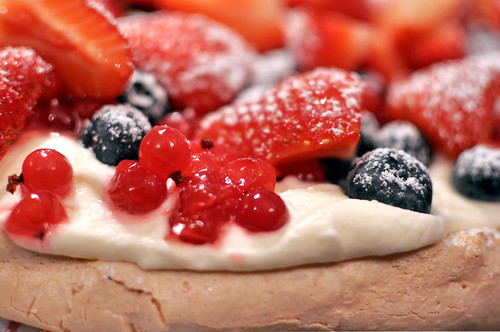Popular dessert called pavlova has its roots in Australia and New Zealand. Thanks to its crisp outside and soft, marshmallowy core, this light and airy meringue-based treat has become a favourite among dessert lovers all over the world. However, there are frequently many enquiries concerning how long pavlova may be stored for.
The well-known meringue-based dessert known as pavlova can keep for up to three days with proper storage. However, a number of variables, like the ingredients used, the storage conditions, and the humidity in your area, affect the pavlova’s shelf life.
Pavlova can turn soft and gooey if left out at room temperature for a few hours. Pavlova should therefore be kept at room temperature for up to 24 hours in an airtight container. To increase its shelf life after that, it is advisable to store it in the refrigerator.
However, keep in mind that pavlova will become softer the longer it is kept. It is also advised to make pavlova fresh if you can because it is best consumed the same day that it is created. Pavlova can be enjoyed for up to three days after it is produced by using the proper storage methods.

Can I store pavlova with fruit toppings, or will it make it go bad faster?
Pavlova with fruit toppings should only be kept in the refrigerator for a short time since the fruit might make the dessert mushy and ripen more quickly. Water from fresh fruit might soak into the pavlova and soften the meringue because it contains a lot of water. It is advisable to add fruit to the pavlova just before serving if you decide to do so.
As an alternative, you might refrigerate the fruit and pavlova separately and combine them right before serving. In addition to keeping the fruit fresh, this will help preserve the pavlova’s texture and crispness. It is recommended to store the pavlova without any toppings and add them only before serving if you need to keep it for a long time. You can make sure that your pavlova stays fresh and delectable for as long as possible by storing your pavlova and fruit separately or topping it right before serving.
How can I revive soft pavlova that has lost its crispiness?
One of the simplest ways to resuscitate a soft pavlova is to re-crisp it in the oven if it has softened and lost its crispness. Set your oven’s temperature to 300 °F (150 °C). The pavlova should be baked for 10 to 15 minutes, or until the outside is crisp and dry, on a baking sheet in a preheated oven.

Can I freeze pavlova to extend its shelf life?
Technically, pavlova can be frozen to lengthen its shelf life. It is not advised, though, as freezing pavlova can make it lose its consistency and turn watery when it thaws.
The meringue may become chewy and sticky due to the pavlova’s high sugar content, which can also modify the texture. Pavlova is best frozen plain, without whipped cream or any other additions. Place the pavlova in an airtight container or freezer bag after securely wrapping it in plastic wrap or aluminium foil. Let it defrost at room temperature for a few hours when you’re ready to use it before you add any toppings or serve it.

Can I make pavlova ahead of time for a special occasion?
For a particular occasion, pavlova might be prepared in advance. Making pavlova in advance actually allows you to prepare dessert ahead of time while concentrating on other components of the meal, which can be a huge time saver. However, it’s crucial to remember that pavlova is best served when it’s still warm and may lose its crunchiness if left out for too long.
You can prepare pavlova ahead of time by baking the meringue base and storing it at room temperature for up to 24 hours in an airtight container. You can put it in the refrigerator for up to two days if you need to keep it for a longer period of time.
In order to keep the pavlova from getting soggy and floppy, it is recommended to add the toppings right before serving. To ensure that the pavlova is fresh and crispy, it is ideal to assemble it right before serving. You can prepare your fruit and whipped cream in advance.
It’s a good idea to pack the pavlova in a strong container and assemble it right before serving if you need to transport it to another location. This will ensure that the pavlova looks its best and tastes its best when served by helping to avoid any harm to it during transit.

Comments are closed